Sedimentary
Rocks
ABOUT
THREE-FOURTH OF THE SURFACE OF THE CONTINENTS ARE COVERED BY SEDIMENTARY
ROCKS. THEY ARE ALSO IMPORTANT, BECAUSE THEY HAVE a huge ECONOMICAL
IMPORTANCE because resources SUCH AS COAL, LIMESTONE, OIL, GAS ARE
stored SEDIMENTARY ROCKS.
Sedimentary Processes
1.Sediment is
forming by physical and chemical weathering.
What is
the major difference between Physical and chemical weathering?
Physical:
Fragmentation
of the original rocks by physical processes such as heat difference,
water freezing, roots and so on. We will be able to describe the
original, parent material.
Chemical:
The original rock composition
will go through essential chemical changes, and new sedimentary rocks
are forming. No way to recognize parent material.
Sediment is the
collective name for loose, solid particles originate from:
1.weathering and erosion of preexisting rocks
2.chemical precipitation from
solution, including organic secretion from water
Sediment is unconsolidated, loose material.
2. Transportation
Second, very important process
in forming sedimentary rocks is transportation.
while transported sediment particles became rounded
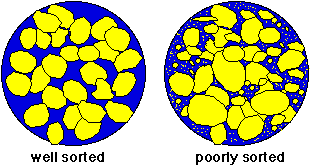
After Annabelle Foos
water, good sorting
wind, perfect sorting
ice, very poor sorting
After
Annabelle Foos
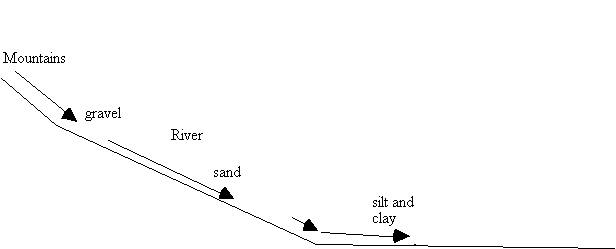
3. Deposition
When
transported material settles down or come to rest deposition occurs. It
is in an other word Accumulation
4.Lithification (diagenesis)
Group
of processes that turn sediment into sedimentary rock
Compaction (weight of overlying sediment)
Cementation (by precipitating minerals, such as calcite, quartz,
hematite)
Sedimentary
structures
Primary
sedimentary structures
stratification
ripple marks
cross-bedding
mud-cracks
graded bedding
They
formed by sedimentary processes, such as currents (flow, eolian,
glacier), during sedimentation.
Sedimentary layers: strata, or bed
The
plane separating the layers are: bedding plane
visible bec. color change
grain size change
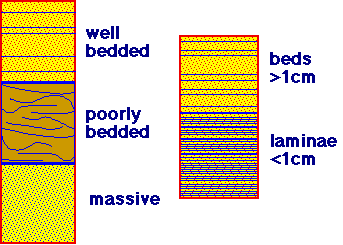
After Annabelle Foos
Stratification: larger scale with lots of changes
Cross Bedding
Inclined layers compare to the bedding plane. Their thickness is very different (from some cm, to 100’s of m) depending from the material and current speed.

After Annabelle Foos
Current
can be
wind
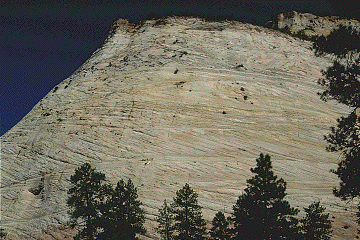
Wind made crossbedding:After Annabelle Foos
Can be
symmetrical (herring bone cross bedding (tidal current), or
Asymmetrical Unidirectional flow
Ripple marks,

After Annabelle Foos
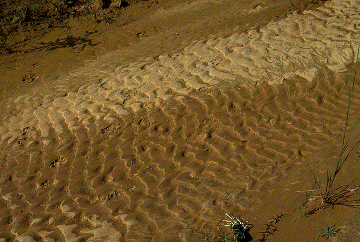
Typical current ripples:After Annabelle Foos
Mudcracks,
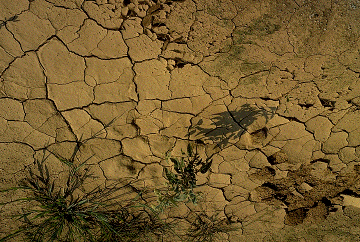
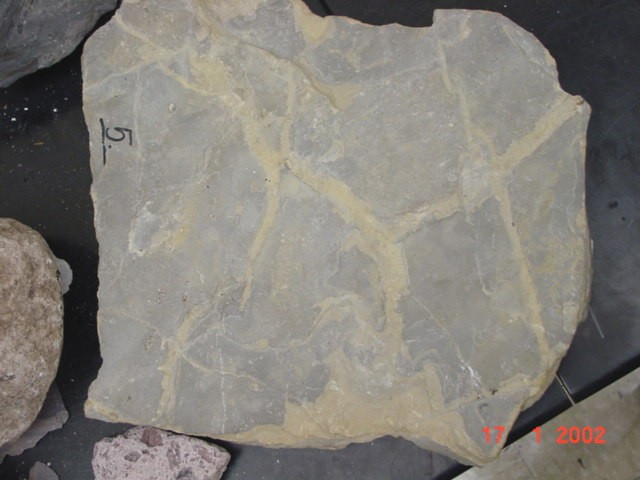
Ancient
mudcracks
Graded bedding
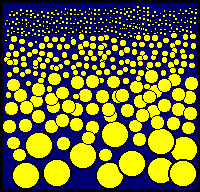
After Annabelle Foos
Progressive upward decrease in grain size
Deep ocean floor by turbidity currents (from continental slope to the adjacent ocean basin)
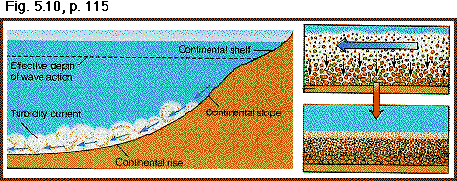
After
Annabelle Foos
Trace fossils, fossils
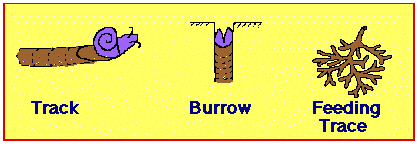
After Annabelle Foos
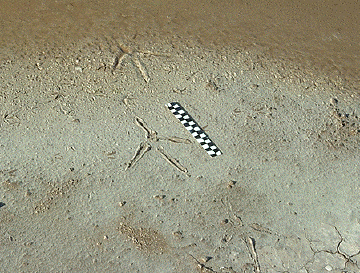
After Annabelle Foos
Sedimentary
Environments
Terrestrial
Marine
The
shore zone is transitional environment
Classification of sedimentary rocks
Clastic
sedimentary rocks:
Most
common minerals: Clay min+ Quartz, because they are extremely durable.
Classification based on grain size:
grain chart
Gravel: >2 mmm
Sand: 2 mm-0.063 mm
Silt: 0.063-0.005mm
Clay: <
0.005mm
shape
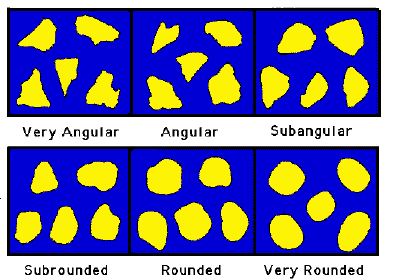
Conglomerate
Rounded gravel size particles. They are large enough to identify them
separately
Usually poorly sorted: pebbles with sand and mud
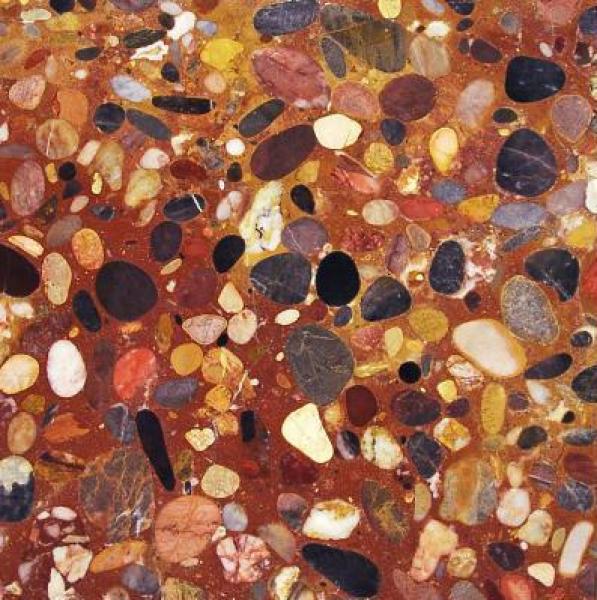
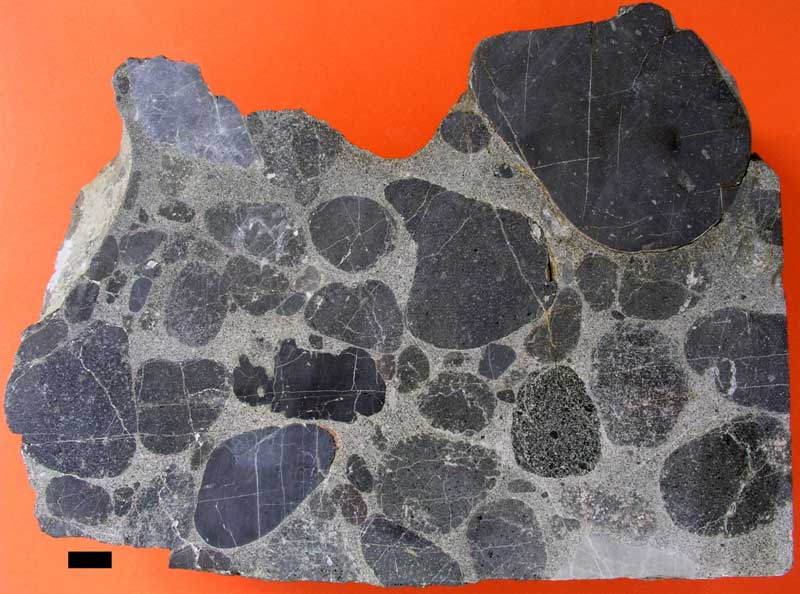
From:(http://www.otago.ac.nz/geology/features/rocks-minerals/conglomerate.jpg)
Breccia
Angular gravel size particles. They are large enough to identify them
separately
Usually poorly sorted: gravel with sand and mud
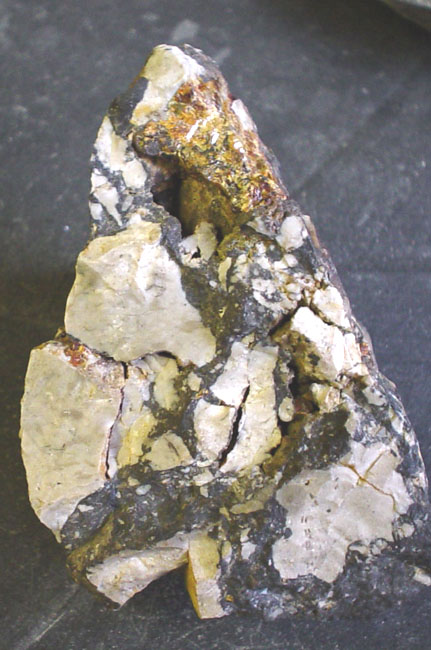

Photo by Ray Nordeen, NPS
Sandstone
20% of all sedimentary rocks
There are a lot of different types of sandstone. They are very and useful for geologists because they give information about the processes they went through, therefore we cand find information about ancient mountains, climate, plate tectonic setting. Characteristics we can use:
1.sorting
2.
Grain shape (indicate distance)
3.
Mineral composition
Some important types:
Arkose
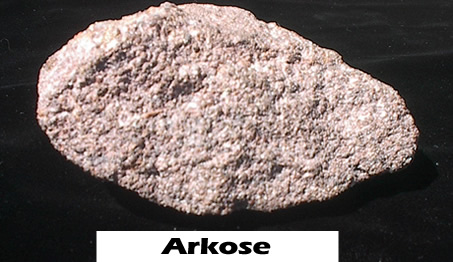
from:http://www2.vscc.cc.tn.us/svinson/geo100/library/sedimentary/large/arkose.jpg
Graywacke: contains lithic(rock) fragments, clay. Usually have poor sorting.

From:http://www.drexel.edu/coe/enggeo/rocks3/graywacke.JPG
Quartz sandstone: contains almost completely quartz
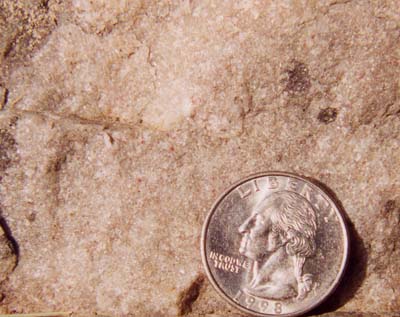
from:http://www.radford.edu
Siltstone
Silt-sized sediment grains.
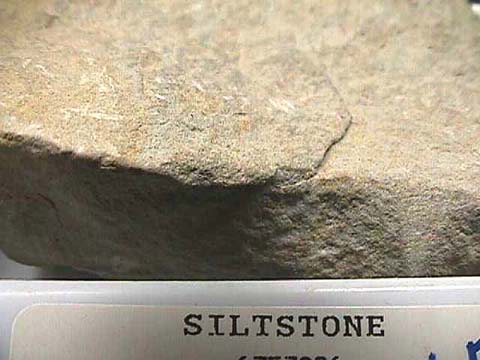
from:www.coconino.edu/kmullins/ rocks/Sedimentary/
Shale
(Mudstone)
Clay
sized particles
Half of all the sedimentary rocks
Very fine grain-size
indicate quiet environment, mostly below wave base (even there they
would deposit as aggregates). Their color gives important clues of the
environment they formed in.Black color indicates: organic matter
(anaerobic environment)
Originally clay has huge pore space filled with water
Small
grainsize cause tight packing (water can not penetrate)
Fissility
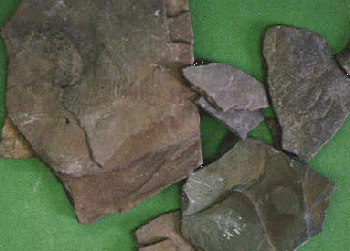
from:http://easyweb.easynet.co.uk/~gcaselton/fossil/images/rock-04.gif
The rock which lack fissility is termed mudstone.
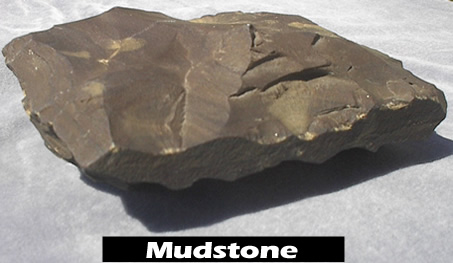
from:http://www2.vscc.cc.tn.us/svinson/geo100/library/sedimentary/large/mudstone.jpg
Shale will never make cliff outcrops, because when wet it erodes easily. Gentle slope is formation is cheracteristic.
Chemical and
organic rocks
Carbonates
Limestone
They effervescences with hydrochloric (HCl) acid
10% of all the sedimentary rocks
Tropical Marine environment.
coral reefs
other animals
Coquina
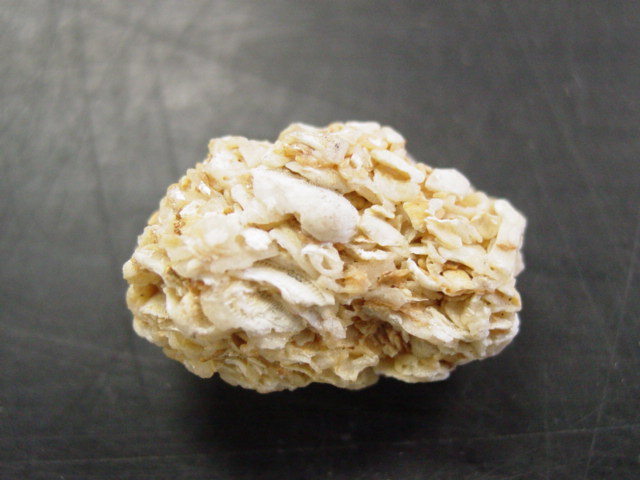
Composed of shell fragments . Formed in high energy environment; close to the shore.
Oolitic limestone
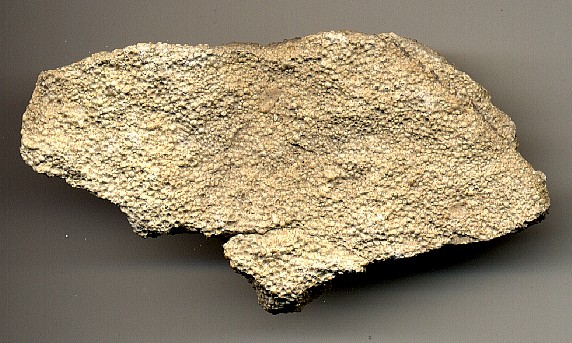
Composed of thousands of tiny balls (concentric calcareous ooliths). Their presence indicate high energy arid environment; close to the shore.
Fossiliferous limestone
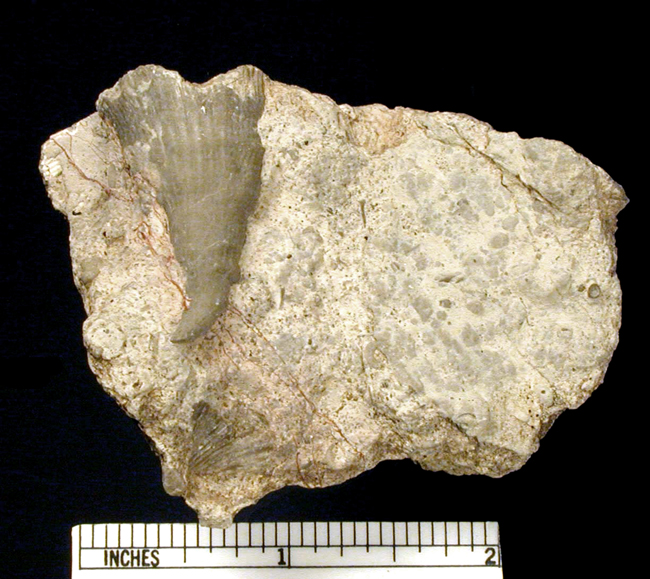
from:http://www.gc.maricopa.edu/earthsci/imagearchive/NACO_HORN_CORAL_big.jpg
Fine grained limestone with visible fossils.
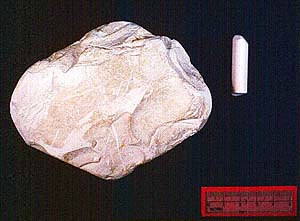
from:http://www.eos.ubc.ca/courses/eosc221/images/sed/carb/pic/mud2.jpg
Lime mudstones are composed of clay sized carbonate particles.
Chalk
Contains
microscopic organism (white cliff of Dover England)

http://www.bbc.co.uk/kent/places/towns/dover/images/white_cliff_270.jpg
Travertine (in caves.And freshwater)
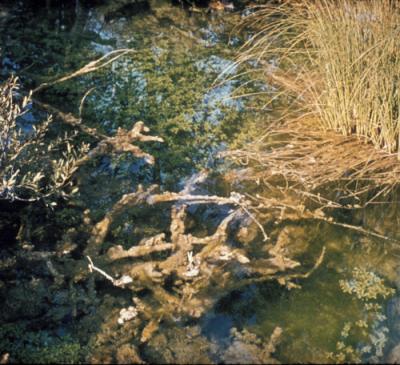
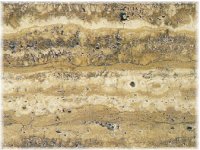
from:http://userpage.fu-berlin.de/~voelker/Vorlesung_Chemische/Abbildungen/sinter.jpg
Forms in freshwater around plants, or in caves.
DOLOMITE
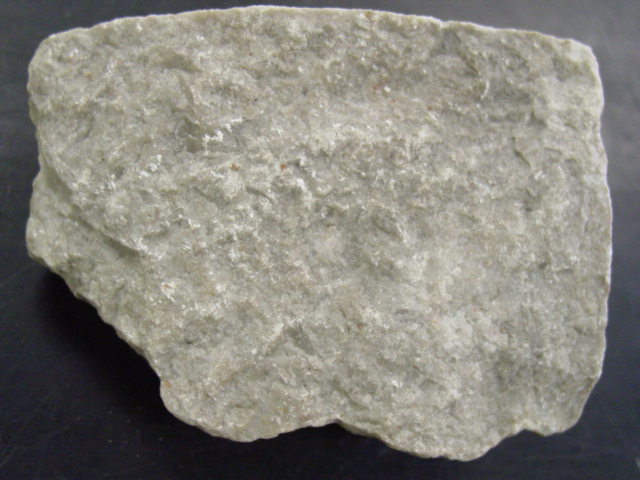
Forms from preexisting limestone under arid condition. Will not effervescence.
Chert
mycroscrystalline silica
flint Black
jasper red
banded agate
Irregular bodies or layers in limestone
It can
be inorganic and organic (radiolaria, diatoms)
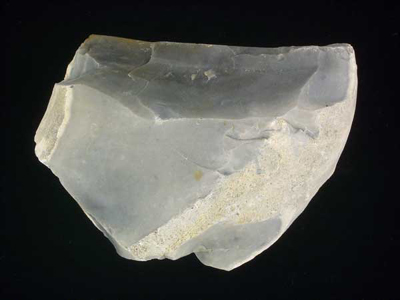
from:www.beg.utexas.edu/.../ graphics/chert.htm
Evaporites
They form in desert environment. They precipitate in order of their solubility;
Gypsum
Anhydrate
halite
sylvite
Coal
Coal forms gradually by burial from undecayed plant material. There are four basic type along the evolution of coal: peat, lignite, bituminous coal, and anthracite.
Peat (brown spongy mass of plants)
65% carbon
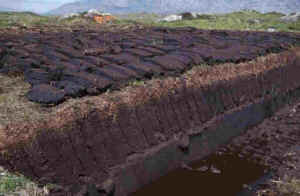
from:www.msnucleus.org/.../ lesson2/mining2b.html
Lignite
75% carbon
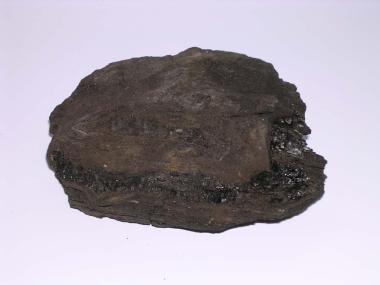
www.msnucleus.org/.../ lesson2/mining2b.html
Bitomenous coal
85% carbon
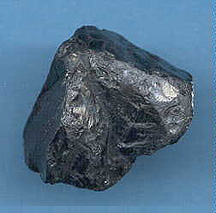
from:http://go.owu.edu/~jbkrygie/krygier_html/geog_111/geog_111_lo/geog_111_lo07_gr/bituminous.jpg
Antracite
95% carbon
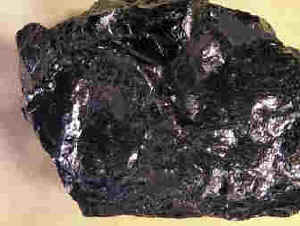
from:http://go.owu.edu/~jbkrygie/krygier_html/geog_111/geog_111_lo/geog_111_lo07_gr